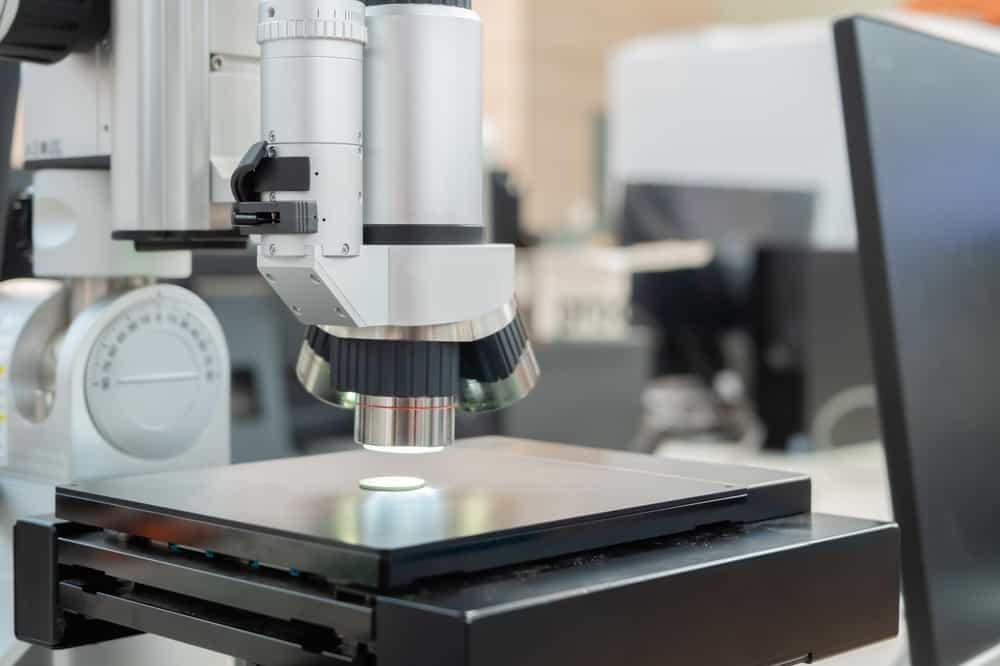
Contents
The Pros of Buying a Used Microscope
If the circumstances are right, there is one key advantage to buying a used microscope over a new one. It’s probably obvious: they’re budget-friendly, and if you do your research, they won’t skimp on quality, either. Analogous in some ways to purchasing a used vehicle, while styles change and go in and out of fashion, it’s “what’s inside that counts.” Truly. If you’re a high-level research scientist whose college science funding has diminished this year, consider buying used microscopes for your whole lab!
An important consideration to remember when buying a used microscope is the extent to which vintage or discontinued models are available. Sometimes, you can save a lot of money, but you will want to have a specific reason for purchasing these types of microscopes, whether for their aesthetic value or specific research interests.
Lastly, purchasing a used microscope allows you to upgrade or customize it. So, instead of considering it the final product, look at it as more of a base model. You can add the upgrades you need to customize it to your specifications, and you’ll likely still save money over buying something new. These options will prove to be valuable in a variety of research contexts.

The Cons of Buying a Used Microscope
You may hear the common phrase “Removed from a working lab” that comes with a used microscope. At first glance, this may seem to you a very good thing. Indeed, if it came from a working lab, it must have been highly functional and used by trusted experts daily.
While that is probably true, what also comes with that message is that if it wasn’t appropriately serviced and well-maintained day in and day out, it will not be the well-oiled machine you assumed. It may malfunction and display other technical problems.
While some labs may have budgets that allow them to replace equipment frequently, others might not. This can mean that the lab only replaced the microscope because it is well past its prime. While these microscopes can work for a while, you probably won’t get much time out of them. You can take it to get repaired or refurbished, but this will cost extra time and money.
Microscopes should last approximately 25 years, so when you buy a used one, you already know it won’t last as long. But you can use this as a rough guide for how long you expect the used microscope to last. If you find one that’s 20 years old, you can probably get it at a steep discount, but you must be aware that you’ll be lucky to get five more years out of it.
Used microscopes also don’t come with warranties, or if they do, they will be more limited than new microscopes. Many warranties only apply to the original owner, so look into your coverage when buying. A warranty on an expensive piece of equipment is always a good idea, and you lose this when you buy used. If something goes wrong, you could be facing costly repairs.

What to Consider When Buying a Used Microscope
There are four main considerations you should have in mind when buying a used microscope:
- The optic and lens quality: you need achromatic brightfield objectives!
- The age and condition of the microscope. You might get lucky and find a second-hand microscope that’s lightly used and in good shape, even if it is a few years old. Ultimately, it will depend on how well the previous owner cared for the equipment.
- The microscope’s compatibility with current needs and applications. Some older models have “infinity objectives,” which aren’t compatible with many modern uses, but this might not matter to you, depending on your needs. You might not need something pristine, and a used slight-less-than-perfect outdated microscope will do. Maybe you’re just buying one for a hobby or as a gift for your child to spark an interest in science. Or, perhaps you’re looking for your lab or business and need something more modern and in good shape.
- The source and reputation of the seller. This is a big one. Ensure the dealer you buy from is experienced, reputable, and has a good track record of providing quality products. You can usually find reviews online. Review them to ensure you’re working with someone who provides quality equipment and customer service.
FAQs
1. Can I test a used microscope before purchasing it?
No. A dealer (a reputable and experienced one, remember!) will conduct a full-length test and diagnostics to ensure it is in perfect working order before selling it. This is why going with a dealer you know you can trust is so important. You won’t be able to check the magnification level, light source, eyepiece lens, objective lens, focus knob, light intensity, phase contrast, or anything else for yourself.
2. How do I determine the quality of a used microscope’s optics?
The seller should have all that information for you, which is another reason you need to be sure you’re working with a reputable dealer.
3. Is it possible to upgrade a used microscope with newer features?
Yes, absolutely! In fact, this is one of the pros of getting one. You can find an affordable used model and upgrade it as needed, say, if you need a higher magnification level. If you’re concerned about cost, you can even take your time and slowly upgrade your used microscope until you get it where you want it.
4. What should I do if I encounter technical issues with a used microscope?
If this happens, you should call a qualified serviceperson with your concerns. They will likely be able to solve the problem. This is one of the risks of buying a used microscope, though. If you had technical issues with a new one, you could contact the company directly, and a warranty would likely cover the problem.
Final Thoughts
Whether you should buy a used microscope is a personal decision. Some people don’t need the most modern equipment, and a used microscope is a great way to get what you need at a fair price. On the other hand, buying new is probably a better option if you need something more modern and technologically advanced and prefer the benefits of a solid warranty.

